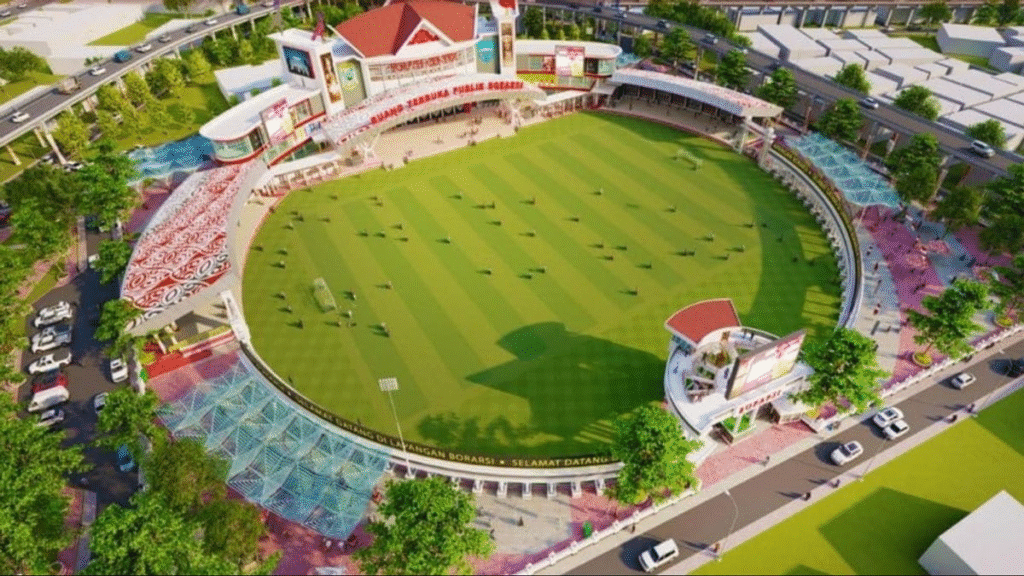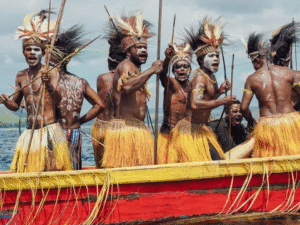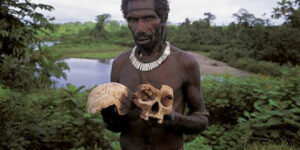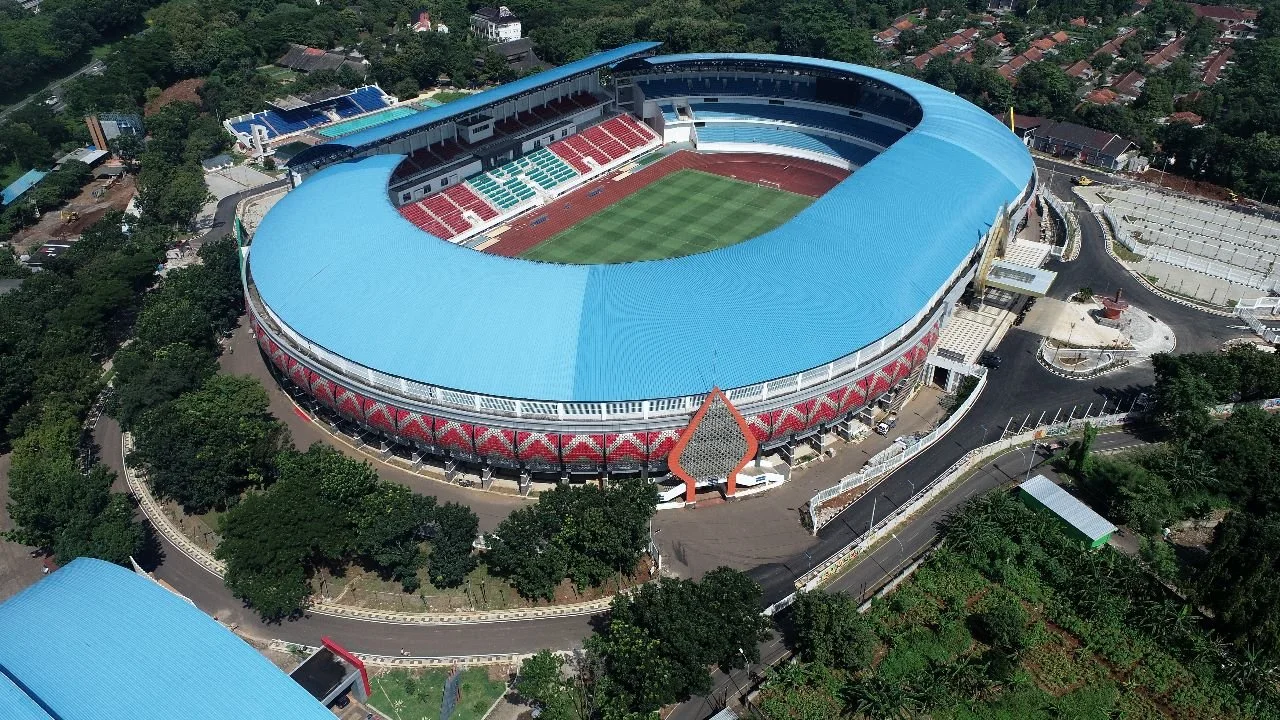Introduction: A Place Beyond Sports
When people hear the word “stadium,” many imagine a place of roaring crowds, athletic feats, and jubilant fans. But in Manokwari, West Papua, the Sanggeng Stadium is much more than that. This iconic venue is not just a field of competition — it is a symbol of resistance, culture, and community identity.
For decades, Sanggeng Stadium has stood as a silent witness to pivotal moments in Papuan history, from youth movements and cultural celebrations to political rallies and social change. Understanding its legacy means exploring more than just sports — it’s about discovering the soul of Manokwari itself.
Chapter 1: Geographical and Cultural Context of Manokwari

Manokwari is the capital of West Papua Province and one of the oldest cities in the region. Situated along the northern coast of the Bird’s Head Peninsula, Manokwari is not only a political and administrative center, but also a spiritual and historical hub for indigenous Papuans.
Sanggeng, a sub-district of Manokwari, is deeply rooted in Papuan nationalism, activism, and socio-political consciousness. It’s here that the Sanggeng Stadium was built — not merely to host football matches but to serve as a gathering ground for a community in motion.
Chapter 2: The Birth of Sanggeng Stadium
Constructed in the 20th century during the era of Dutch colonial presence and later restructured under Indonesian administration, Sanggeng Stadium emerged as one of the earliest formal sports venues in Papua.
Its early years saw it serve as a space for school competitions, military training exercises, and national holiday celebrations. But from the very beginning, it was never just about sports. The open field of Sanggeng Stadium became a breathing space for freedom of expression, often used by youth, students, and traditional leaders.
Even without modern facilities, locals took pride in the stadium as a symbol of public space for Papuans — something rare and valuable at a time when public expression was often restricted.
Chapter 3: A Center for Youth and Resistance
Throughout the 1970s to 2000s, Sanggeng Stadium evolved into a focal point of youth movements in Papua. Activists, university students, and grassroots organizations often used the stadium as a base to hold rallies, deliver speeches, and demand justice for issues affecting indigenous Papuans.
Sanggeng was more than a venue — it was a platform for political awakening. During Indonesia’s reform era in the late 1990s, Sanggeng was among the few places in Manokwari where Papuans could express dissent or solidarity with national student movements calling for democratization.
Even during heightened military tension, the stadium retained its identity as a safe space for people to gather, discuss, and connect — proof of its central role in the social consciousness of Manokwari.
Chapter 4: Cultural Festivals and Local Identity
Sanggeng Stadium is also known as the heart of cultural expression in Manokwari. Over the years, it has hosted:
- Papuan arts festivals featuring traditional dances and music
- Church youth gatherings
- GKI (Gereja Kristen Injili) anniversary events
- Indigenous ceremonies celebrating land and harvest
These events made the stadium more than just concrete and grass. It became a living museum of local identity. The chants of war songs, the beats of tifa drums, and the colors of noken weaving all echoed through the stands of Sanggeng, reinforcing the deep connection between land, people, and heritage.
Chapter 5: Role in Papuan Sports Development
In terms of athletics, Sanggeng Stadium played a key role in nurturing young athletes from West Papua. Before more modern venues were built in Sorong or Jayapura, Sanggeng was the primary training ground for regional football teams and track athletes.
Many notable Papuan footballers began their journey on the turf of Sanggeng. The stadium hosted local league matches, inter-school tournaments, and youth scouting programs. For many, the dream of becoming a national athlete started from this humble ground.
The stadium also symbolized equality in opportunity, allowing children from underprivileged areas to train and compete without needing to travel to big cities.
Chapter 6: The Stadium as a Political Landmark
In modern Papuan history, Sanggeng Stadium has become associated with major political statements and assemblies. Over the past two decades, it has hosted:
- Autonomy debates and peaceful rallies
- Public memorials for Papuan leaders and activists
- Community dialogue events on development, rights, and education
Despite challenges, the community consistently uses the stadium as a civic forum, inviting NGOs, media, and political representatives to discuss the region’s future.
Some moments in Sanggeng have made national headlines — such as peaceful protests regarding the Special Autonomy Law (Otsus), or gatherings commemorating the Trikora operation and its implications.
Even during periods of tension, such as the 2019 Papuan uprisings, the stadium remained a critical assembly point for coordinated responses and youth organizing.
Chapter 7: Infrastructure Challenges and Community Advocacy
While symbolically powerful, Sanggeng Stadium has faced serious infrastructural issues in recent years. Poor drainage, lack of seating, inadequate lighting, and deteriorating turf have all made it difficult to host large events consistently.
However, instead of abandoning the stadium, the people of Manokwari have mobilized to preserve and restore it. Local petitions, proposals to the provincial government, and community clean-up efforts have highlighted the love residents have for Sanggeng.
In 2023, a regional budget allocation finally included renovation plans for the stadium, with community stakeholders involved in designing a more inclusive and culturally respectful space.
Chapter 8: The Future of Sanggeng Stadium
Plans are now underway to:
- Upgrade the field and stands for athletic and cultural events
- Build a community library and co-working hub within the stadium complex
- Establish Papuan heritage galleries that showcase the history of resistance, art, and sport
- Install solar panels and green architecture to promote sustainability
Sanggeng Stadium is no longer just a field — it is on its way to becoming a living symbol of Papuan resilience, memory, and hope.
Chapter 9: Testimonials from the Community
“We don’t need a stadium like in Jakarta. We need a place that respects our culture and our right to speak.”
— Yulianus, student activist
“I learned to run and dream here. Sanggeng made me believe I could become an athlete, even from Papua.”
— Albert, former football player
“When my father passed, we held his memorial in Sanggeng. It was a place for us all to remember him, and what he stood for.”
— Mama Wonda, elder from Sanggeng
Chapter 10: Why Sanggeng Matters Today
In an age where public spaces are increasingly privatized or militarized, Sanggeng stands as a beacon of community strength. It teaches us that stadiums are not just for sports — they are for the people.
They are where children play, where history is remembered, and where the future is imagined. In the heart of Papua, Sanggeng Stadium is not just important — it is sacred.
Conclusion: A Symbol of Identity, Resilience, and Unity
The Sanggeng Stadium of Manokwari has witnessed decades of joy, sorrow, resistance, and pride. From cultural festivals to political movements, it remains one of the most iconic landmarks of Papua Barat — a place where people gather not only to compete, but to connect.
Its story is not over. In fact, it’s still being written — with every child that plays on its field, every voice that echoes through its stands, and every dream born in its shadow.
Sanggeng Stadium is not just part of Papuan history. It is Papuan history.
Read More :
- Inside Papua: Discovering the Unique Tribes of Indonesia’s Eastern Frontier
- Raja Ampat: The Ultimate Underwater Adventure in Southwest Papua
- Echoes of the Jungle: Traditional Musical Instruments of Papua
- In Java People Hijack Rice Fields Using Cows, in Papua Using Pigs
- Grasberg Mine: How Freeport Built the Largest Gold Mine in Papua









